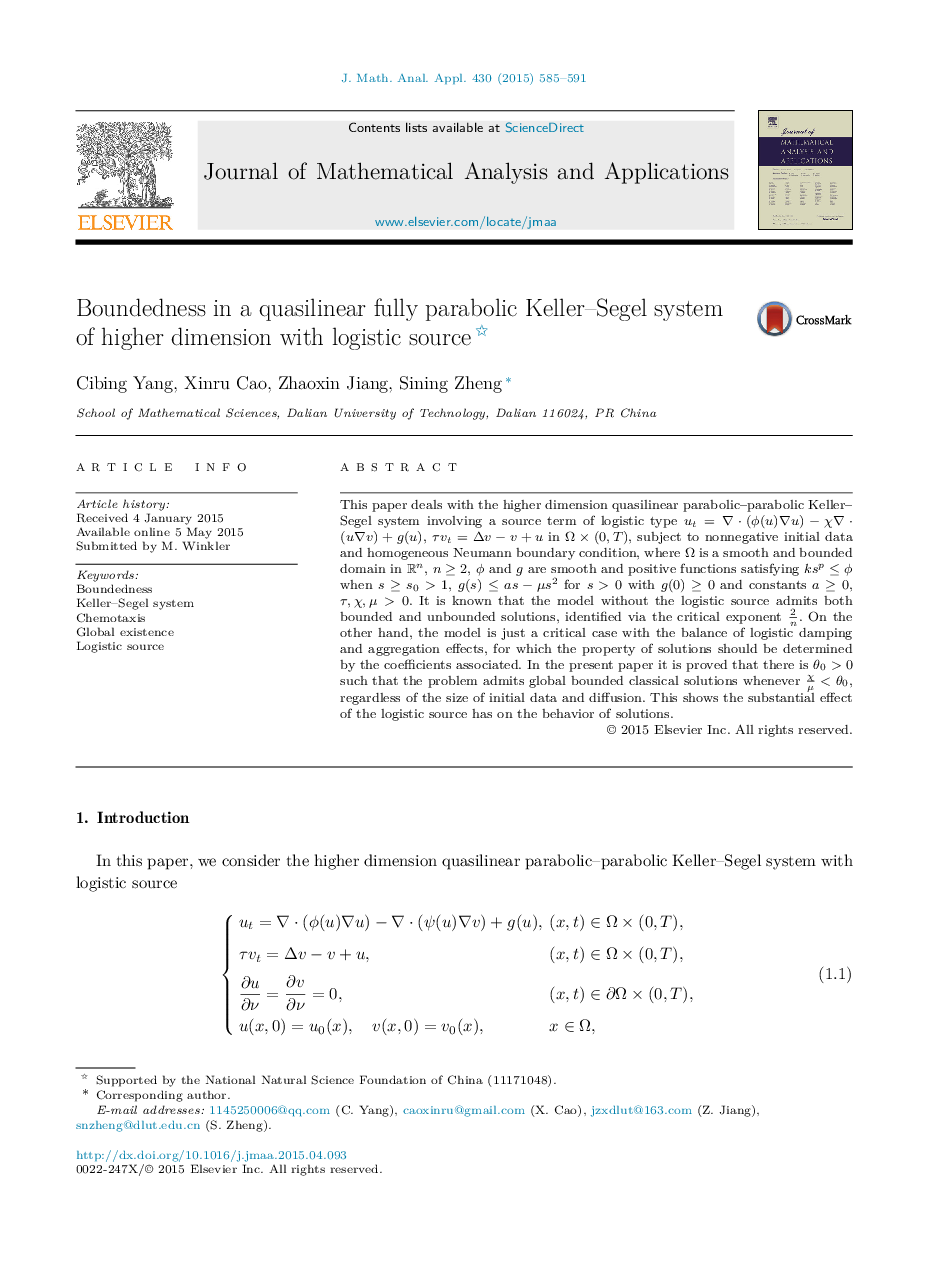| Article ID | Journal | Published Year | Pages | File Type |
|---|---|---|---|---|
| 4615001 | Journal of Mathematical Analysis and Applications | 2015 | 7 Pages |
This paper deals with the higher dimension quasilinear parabolic–parabolic Keller–Segel system involving a source term of logistic type ut=∇⋅(ϕ(u)∇u)−χ∇⋅(u∇v)+g(u)ut=∇⋅(ϕ(u)∇u)−χ∇⋅(u∇v)+g(u), τvt=Δv−v+uτvt=Δv−v+u in Ω×(0,T)Ω×(0,T), subject to nonnegative initial data and homogeneous Neumann boundary condition, where Ω is a smooth and bounded domain in RnRn, n≥2n≥2, ϕ and g are smooth and positive functions satisfying ksp≤ϕksp≤ϕ when s≥s0>1s≥s0>1, g(s)≤as−μs2g(s)≤as−μs2 for s>0s>0 with g(0)≥0g(0)≥0 and constants a≥0a≥0, τ,χ,μ>0τ,χ,μ>0. It is known that the model without the logistic source admits both bounded and unbounded solutions, identified via the critical exponent 2n. On the other hand, the model is just a critical case with the balance of logistic damping and aggregation effects, for which the property of solutions should be determined by the coefficients associated. In the present paper it is proved that there is θ0>0θ0>0 such that the problem admits global bounded classical solutions whenever χμ<θ0, regardless of the size of initial data and diffusion. This shows the substantial effect of the logistic source has on the behavior of solutions.
